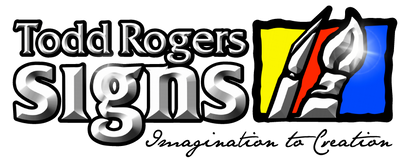LED vs. Traditional Neon: Light Up Your Life
Hey there, glow-getters! If you're thinking about adding a splash of neon magic to your space, you’re in for a treat. Neon signs have been making things look cooler and brighter for decades, but now, there's a new kid on the block—LED neon. Both have their charm, but which one is right for you? Let’s dive into the colourful world of LED and traditional neon to help you make the best choice. Ready to light up your life? Let’s go!
The Classic Charm of Traditional Neon

What is Traditional Neon? Traditional neon signs are made using glass tubes filled with neon gas (or other gases for different colours). An electric current passes through the gas, causing it to glow brightly. These signs have been a staple of eye-catching advertising since the early 20th century.
Pros:
- Iconic Look: There’s something timeless and nostalgic about the warm glow of traditional neon. It’s perfect for creating a retro vibe.
- Bright and Vivid: Traditional neon signs produce a bright, consistent light that stands out in any setting.
- Durability: When made well, neon signs can last for many years, becoming iconic fixtures in their own right.
Cons:
- Fragility: The glass tubes are delicate and can break easily, requiring careful handling and installation.
- Heat and Energy Use: Neon signs can get quite hot and consume more energy compared to LEDs.
- Cost: The initial cost can be higher due to the labor-intensive process of bending and filling the glass tubes.
The Modern Magic of LED Neon

What is LED Neon? LED neon signs use flexible LED strips encased in a silicone or PVC tube. These strips mimic the appearance of traditional neon but with modern LED technology.
Pros:
- Energy Efficiency: LEDs use significantly less energy than traditional neon, making them more eco-friendly and cost-effective in the long run.
- Durability: LED neon signs are much more robust. They’re less likely to break and can withstand bumps and drops.
- Cool to the Touch: Unlike traditional neon, LEDs don’t get hot, making them safer to handle and install.
- Versatility: LED neon is available in a wide range of colours and can be easily shaped to create intricate designs.
Cons:
- Initial Cost: While the running costs are lower, the initial cost for high-quality LED neon signs can be similar to or higher than traditional neon.
- Brightness: Some people feel that LED neon doesn’t quite match the warmth and intensity of traditional neon’s glow.
- Look and Feel: Purists might argue that LED neon doesn’t have the same authentic charm as traditional neon.
Where to Use Each Type
Traditional Neon:
- Bars and Restaurants: Perfect for creating a nostalgic, retro atmosphere that invites patrons to relax and enjoy.
- Vintage Stores and Themed Events: Ideal for places and events that want to evoke a sense of history and style.
LED Neon:
- Modern Offices and Homes: Great for adding a touch of modern flair without worrying about energy costs or heat.
- Outdoor Signage: LED neon’s durability and weather resistance make it perfect for exterior signs.
- Custom Designs and Temporary Installations: Easier to create intricate and custom shapes, and safer for temporary setups at events and pop-ups.
Check with Your Local Council
Before you decide on your neon adventure, it’s always a good idea to check with your local council for any regulations or requirements if you’re planning to install the sign in a public or commercial space. There might be rules regarding size, brightness, or placement that you need to follow.
Conclusion
Both traditional and LED neon signs have their unique charms and advantages. If you’re after that classic, warm glow and don’t mind the extra care and energy usage, traditional neon might be the way to go. On the other hand, if you’re looking for something more energy-efficient, durable, and versatile, LED neon is a fantastic modern alternative.
Whichever you choose, you’re sure to add a brilliant, eye-catching element to your space that will light up your life and leave a lasting impression.
Happy glowing!



